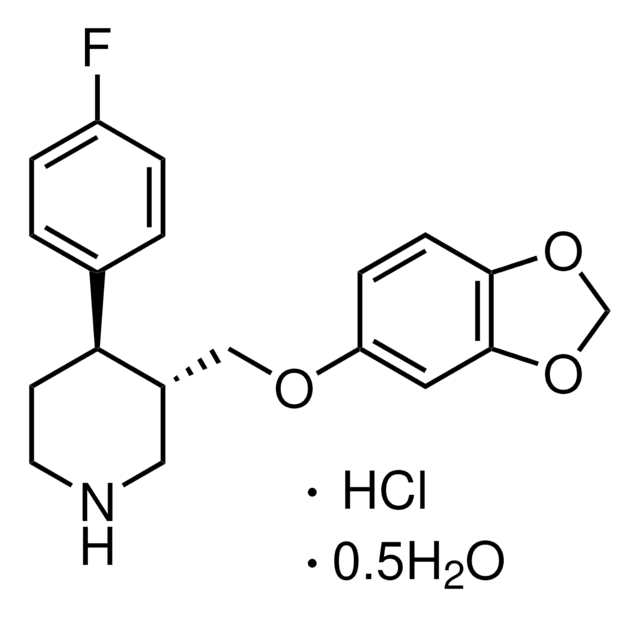Kluczowe dokumenty
Q1004
Quipazine maleate salt
Synonim(y):
2-(1-Piperazinyl)quinoline maleate salt
About This Item
Polecane produkty
rozpuszczalność
H2O: soluble
alcohol: soluble
dilute aqueous acid: soluble
Poziom jakości
temp. przechowywania
2-8°C
ciąg SMILES
OC(=O)\C=C/C(O)=O.C1CN(CCN1)c2ccc3ccccc3n2
InChI
1S/C13H15N3.C4H4O4/c1-2-4-12-11(3-1)5-6-13(15-12)16-9-7-14-8-10-16;5-3(6)1-2-4(7)8/h1-6,14H,7-10H2;1-2H,(H,5,6)(H,7,8)/b;2-1-
Klucz InChI
QYJJDHZHSCTBII-BTJKTKAUSA-N
informacje o genach
human ... HTR1A(3350) , HTR1B(3351) , HTR1D(3352) , HTR1E(3354) , HTR1F(3355) , HTR2A(3356) , HTR2B(3357) , HTR2C(3358) , HTR3A(3359) , HTR3B(9177) , HTR3C(170572) , HTR3D(200909) , HTR3E(285242) , HTR4(3360) , HTR5A(3361) , HTR5B(645694) , HTR6(3362) , HTR7(3363)
Zastosowanie
Działania biochem./fizjol.
Hasło ostrzegawcze
Danger
Zwroty wskazujące rodzaj zagrożenia
Zwroty wskazujące środki ostrożności
Klasyfikacja zagrożeń
Acute Tox. 3 Oral
Kod klasy składowania
6.1D - Non-combustible acute toxic Cat.3 / toxic hazardous materials or hazardous materials causing chronic effects
Klasa zagrożenia wodnego (WGK)
WGK 3
Temperatura zapłonu (°F)
Not applicable
Temperatura zapłonu (°C)
Not applicable
Środki ochrony indywidualnej
dust mask type N95 (US), Eyeshields, Faceshields, Gloves
Wybierz jedną z najnowszych wersji:
Masz już ten produkt?
Dokumenty związane z niedawno zakupionymi produktami zostały zamieszczone w Bibliotece dokumentów.
Nasz zespół naukowców ma doświadczenie we wszystkich obszarach badań, w tym w naukach przyrodniczych, materiałoznawstwie, syntezie chemicznej, chromatografii, analityce i wielu innych dziedzinach.
Skontaktuj się z zespołem ds. pomocy technicznej









